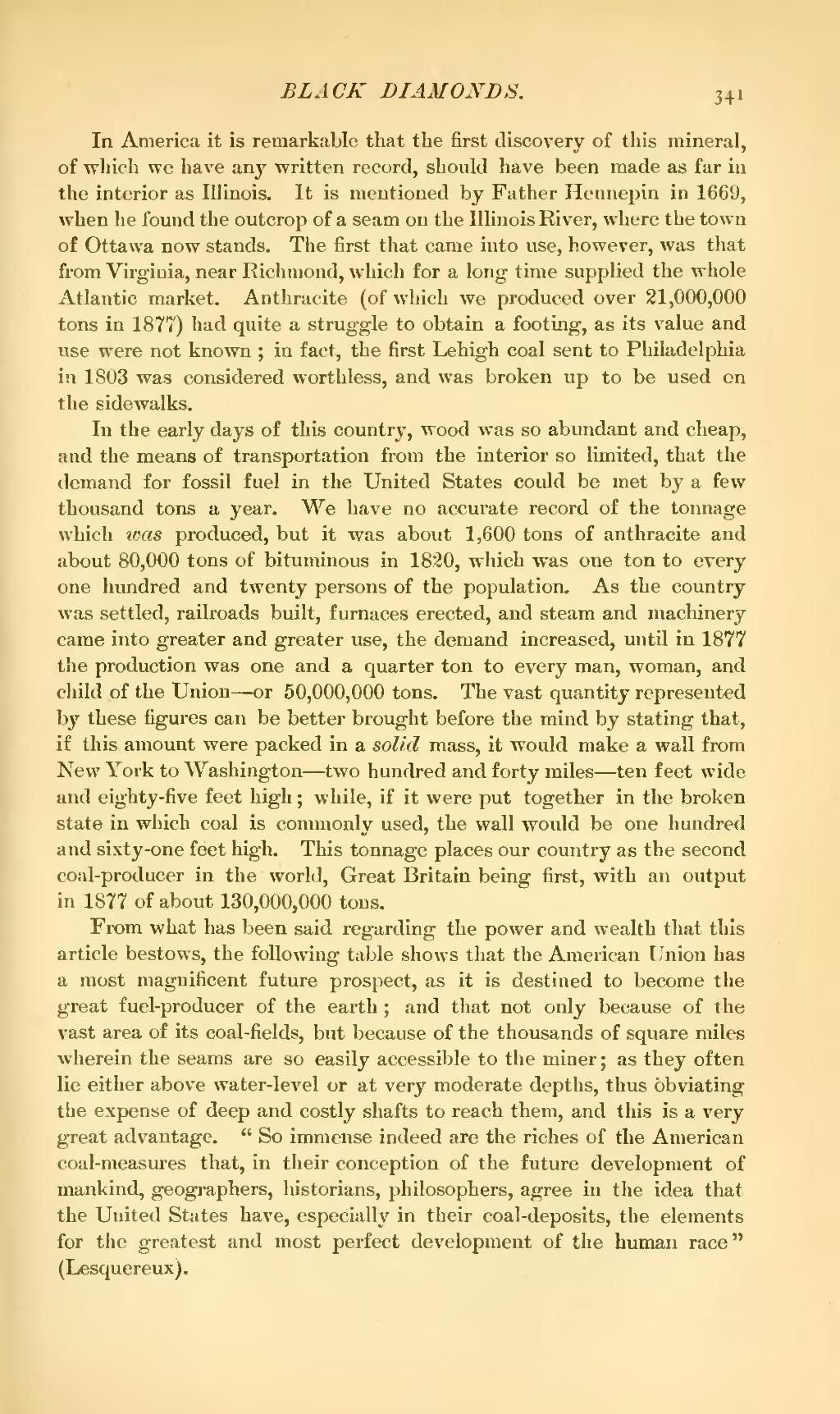In America it is remarkable that the first discovery of this mineral, of which we have any written record, should have been made as far in the interior as Illinois. It is mentioned by Father Hennepin in 1669, when he found the outcrop of a seam on the Illinois River, where the town of Ottawa now stands. The first that came into use, however, was that from Virginia, near Richmond, which for a long time supplied the whole Atlantic market. Anthracite (of which we produced over 21,000,000 tons in 1877) had quite a struggle to obtain a footing, as its value and use were not known; in fact, the first Lehigh coal sent to Philadelphia in 1803 was considered worthless, and was broken up to be used on the sidewalks.
In the early days of this country, wood was so abundant and cheap, and the means of transportation from the interior so limited, that the demand for fossil fuel in the United States could be met by a few thousand tons a year. We have no accurate record of the tonnage which was produced, but it was about 1,600 tons of anthracite and about 80,000 tons of bituminous in 1820, which was one ton to every one hundred and twenty persons of the population. As the country was settled, railroads built, furnaces erected, and steam and machinery came into greater and greater use, the demand increased, until in 1877 the production was one and a quarter ton to every man, woman, and child of the Union—or 50,000,000 tons. The vast quantity represented by these figures can be better brought before the mind by stating that, if this amount were packed in a solid mass, it would make a wall from New York to Washington—two hundred and forty miles—ten feet wide and eighty-five feet high; while, if it were put together in the broken state in which coal is commonly used, the wall would be one hundred and sixty-one feet high. This tonnage places our country as the second coal-producer in the world. Great Britain being first, with an output in 1877 of about 130,000,000 tons.
From what has been said regarding the power and wealth that this article bestows, the following table shows that the American Union has a most magnificent future prospect, as it is destined to become the great fuel-producer of the earth; and that not only because of the vast area of its coal-fields, but because of the thousands of square miles wherein the seams are so easily accessible to the miner; as they often lie either above water-level or at very moderate depths, thus obviating the expense of deep and costly shafts to reach them, and this is a very great advantage. "So immense indeed are the riches of the American coal-measures that, in their conception of the future development of mankind, geographers, historians, philosophers, agree in the idea that the United States have, especially in their coal-deposits, the elements for the greatest and most perfect development of the human race" (Lesquereux).

